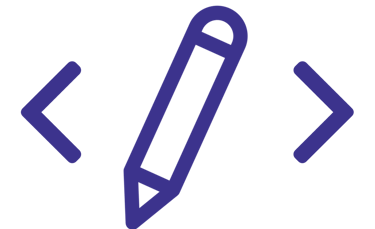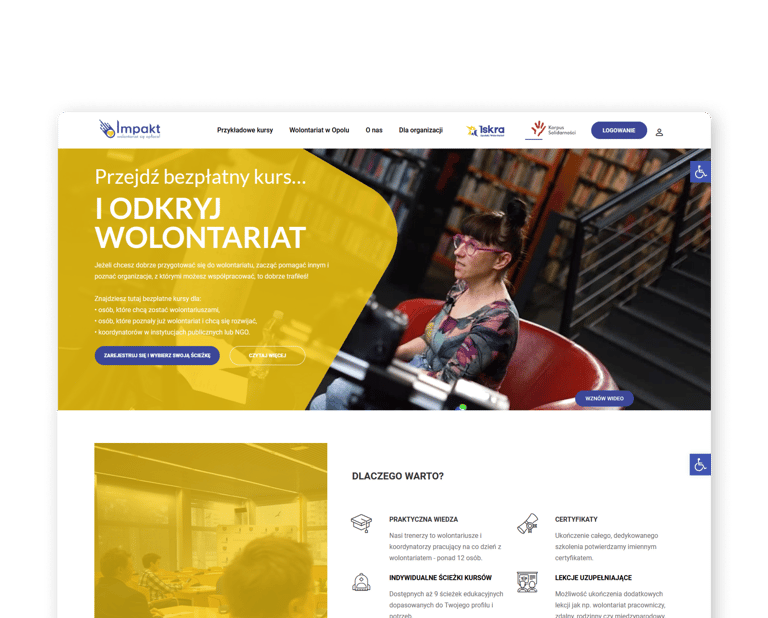

UX research that resulted in an e-learning platform for volunteers and NGOs.
Impakt
Project
Info
Role
UX Researcher & UX Writer
Timeline
February - May 2022
Tools
Google Workspace
Miro
Figma
I did a project for an NGO Iskra from Opole where we investigated training possibilities for new volunteers. There was a general trend in Poland showing a decrease in volunteer activities. Additionally, organizational obstacles within the foundation made it difficult and time-consuming to train new helpers. They needed a long-term solution that would invite new volunteers and make the onboarding process more smooth. I joined forces with another researcher and we worked closely with coordinators, foundation's protégés and volunteers themselves to learn about the needs of all these groups. The initiative is called Impakt and has since engaged many other Polish NGOs.
Overview
People don't know how to start volunteering. New volunteers lack the skills and know-how and a mentor is not always available. NGOs exchange volunteers for various projects and need to quickly prepare them for new challenges.
I conducted user and market research involving all interest groups. Based on my recommendations a website was set up with access to e-learning platform and guidance program for new volunteers.
Problem
Outcome
Team
Bartosz Berezowski
Katarzyna Kowalska
Paulina Wójcik
End result
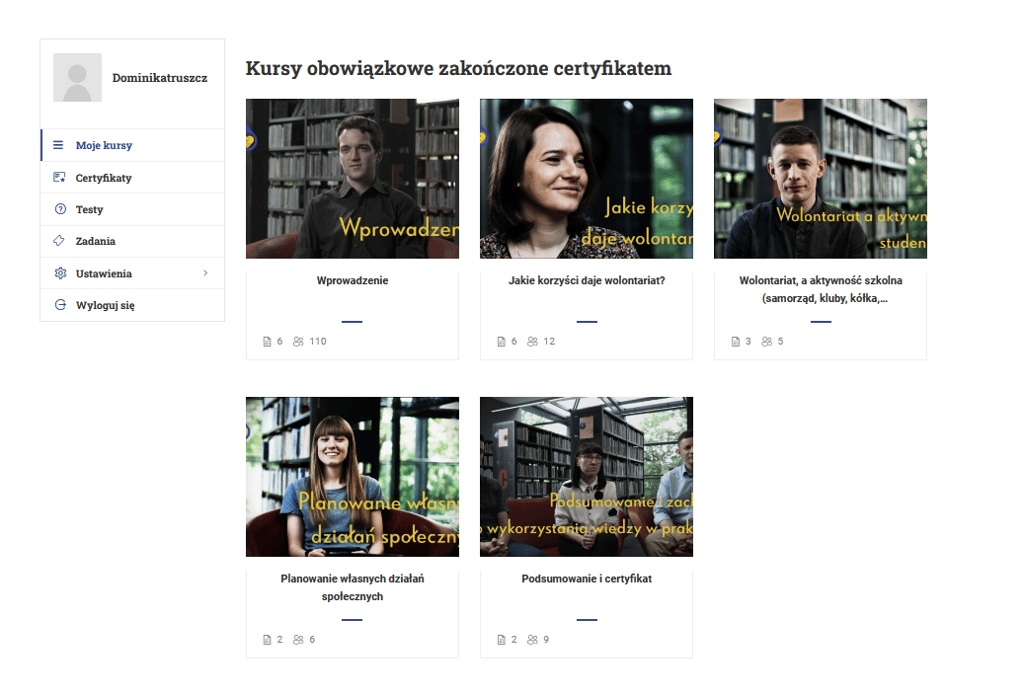

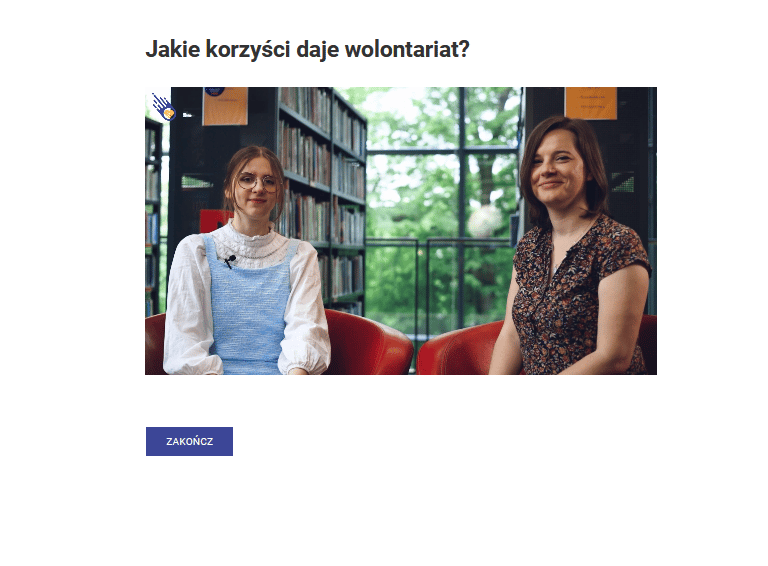

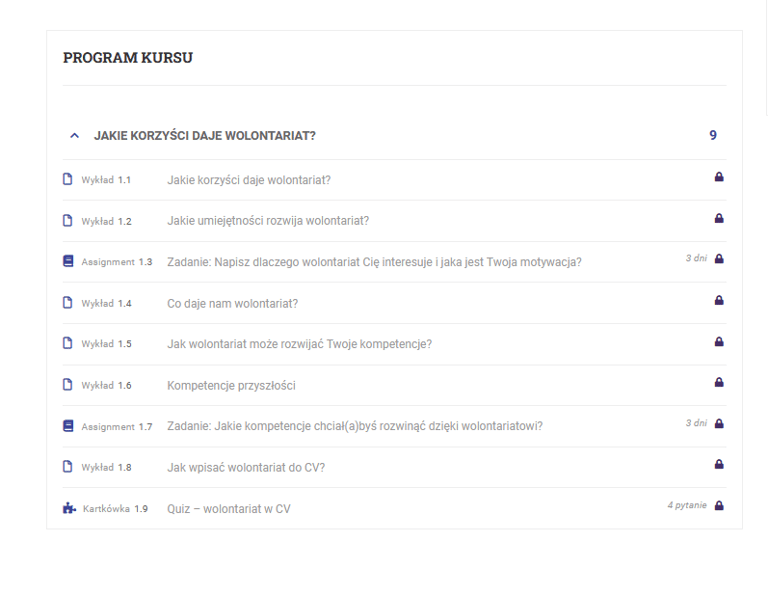

Research process
Introduction
1
project brief, stakeholder meetings, desk research
2
Live research
8 interviews, field research, focus group
3
Online research
user survey, cross-tabulation analysis, affinity mapping, market research
4
Conclusions
creating personas, final recommendations and report, technical and design consultations
5
Usability tests
guerilla tests with 6 users on a hi-fi prototype
Primary research
First we met in a small group that included volunteers with varied level of experience, their coordinators and 2 foundation project managers. We discussed current organizational issues as well as trainings and development within the foundation from volunteers' perspective. It helped me to step into volunteers' shoes. Based on our conclusions I redefined my research questions and set out the next steps .
Exploring foundation's needs
In-depth interviews
Focus group
Field research
In order to gain a deeper insight into the NGOs' functioning I wanted to speak to people directly. I divided my "subjects" into 3 main interest groups: I interviewed 4 volunteers, 2 coordinators and 2 foundation's protégés (people who are being taken care of). Each of these groups had different needs but constantly communicated with one another, that's why it was important to outline a holistic view of how this ecosystem works. The interview responses were further processed using cross-tabulation analysis.
During one interview the coordinator showed me current tools the foundation is using to introduce new volunteers to the organization. Manouvering between Discord, Facebook, Google Workspace and Todoist was tiring, chaotic and required writing down a lot of information. I also took part in a training for volunteers where I could observe how knowledge is passed and ask the trainees about their attitude.
An anonymous survey has been conducted among the same 3 interest groups, but we extended the range to other Polish foundations to receive more well grounded responses. Altogether 86 responses were gathered and I analyzed them all by cluster analysis and affinity mapping.
User survey
To get a better grasp of the solution we were working on and discover new possibilities I reviewed most popular learning tools used by organizations worldwide.
Market research
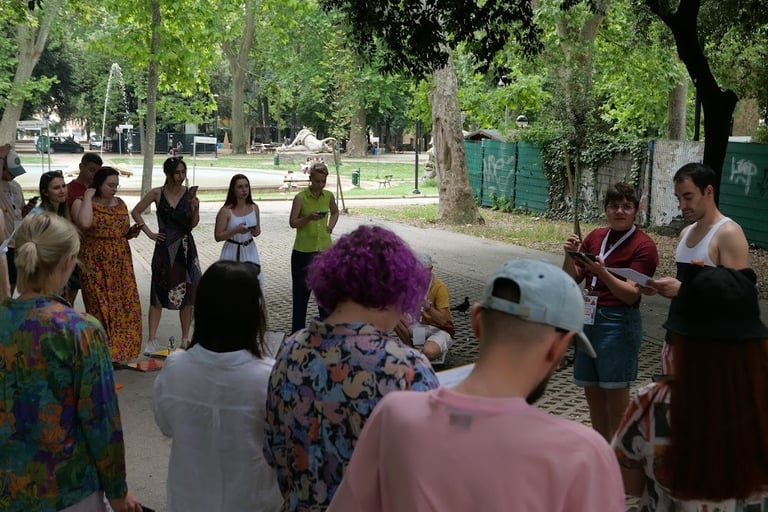

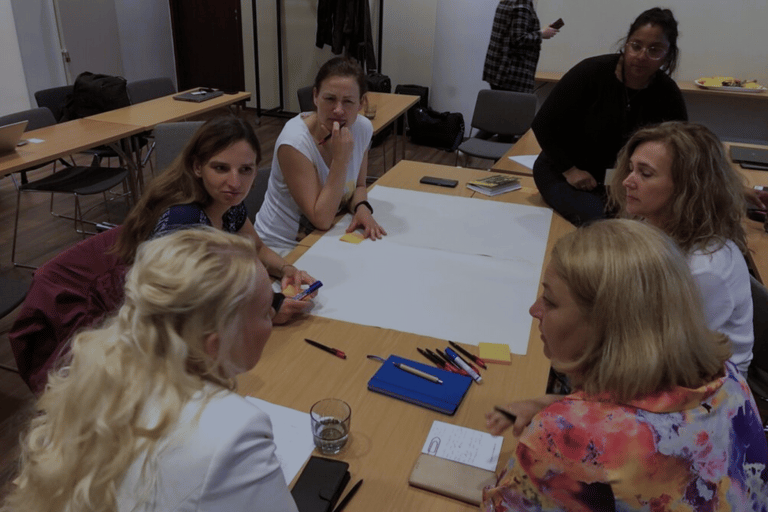

During focus group we discussed current training methods and the needs of all involved parties
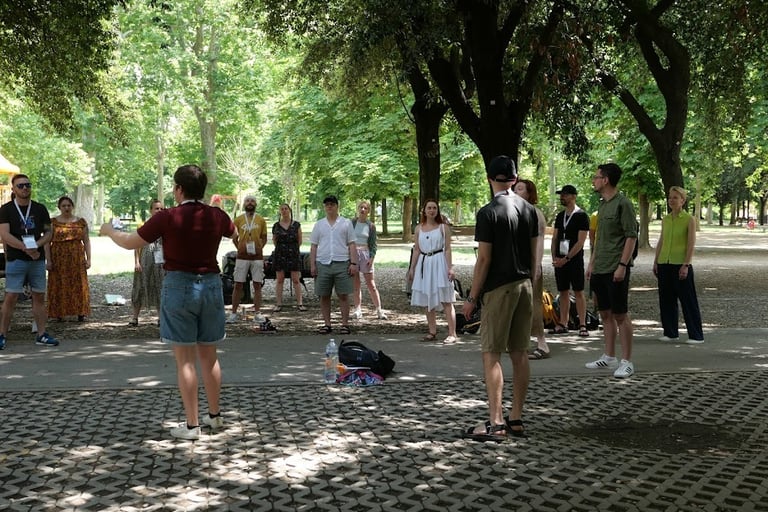

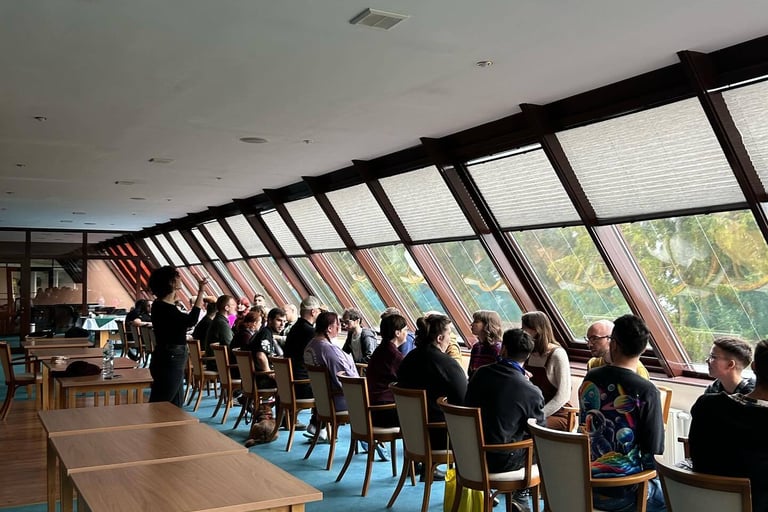

I could participate in live workshops for volunteers which helped me to better immerse in their environment and responsibilities
Results
Major findings & uncovered insights
Limited capacity
NGOs operate in a similar manner to small corporations and people are often overworked and burnt out. NGOs need more volunteers and coordinators. This would enhance the strategic planning and increase capacity. According to reports I've studied, people often don't join any initiatives because they don't know how or where to start or are afraid it would be too time consuming.
Volunteering challenges
During the research we uncovered main areas of improvement for volunteers and coordinators that could become potential training topics. Many new joiners are inexperienced and not fully aware of the daily challenges of volunteer work. Coordinators often can't spare the time to properly train someone. This leads to high rotation in volunteer ranks, and teams cannot fully bond with one another to establish a steady workplan.
Training organization
Many NGOs don't have a dedicated space to chair group trainings/meetings. Moreover, the constant lack of funds excludes the possibility to rent a space or organize workshops. Most onboarding materials are shared via online documents or presentations and the new joiner may be assigned a mentor. Volunteers don't always live in the same area as their foundation, so that's why online tools are used.
Lack of funds
Since NGOs often struggle with low funding, they can't afford professional courses for their employees. One of the major insights behind the project was to minimize the costs and workload, and also that the final solution should be easy to maintain and update.
Common ground
Each NGO team has their own resources and there isn't much collaboration between organizations in terms of volunteer training. Which is obstructive considering how often volunteers are exchanged between projects. Also, new volunteers would like some insight about a specific project before they fully commit.
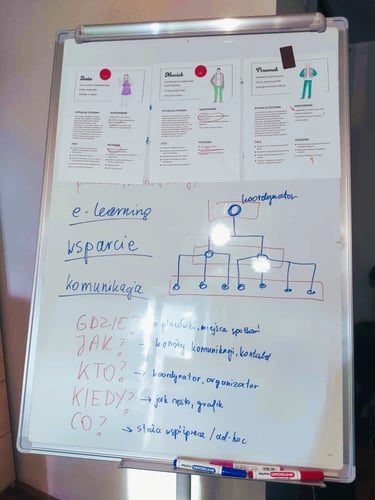

Conclusions
Major recommendations
Recommendations
➤ the solution should be an e-learning platform introducing people to volunteering and its various aspects
➤ the platform should be free and accessible to everyone, including people with disabilities
➤ e-learning should consist of videos, presentations and virtual sessions led by coordinators
➤ there should be various learning paths for inexperienced volunteers, experienced volunteers and coordinators
➤ the platform should offer development e.g. towards coordinator role
➤ there should be a project list with contact details so volunteers can easily join the initiative
➤ training programs should be created based on recommended training topics
Considerations
➤ project scope may involve hiring a filming & editing team
➤ psychologists and teachers' insight would be beneficial when creating learning content
➤ account registration and data collection may be required to use the platform
After I delivered recommendations, the UX designer created a prototype of the landing page and the learning platform.
Design verification
Testing
The website and platform prototype has been tested with 6 users (not related to NGOs in any way).
Based on tests we corrected copy on buttons, removed the trainer carousel and introduced example training available without registration. Overall, users understood the idea behind the project and found the curriculum experience straightforward and easy.
The face of the project
Project website
We worked closely with Paulina, the UX designer, to ensure the website is coherent, transparent and encourages users to enroll in courses. I also edited the text to make it more comprehensible and user-friendly. Accessibility tools panel is included as a widget.
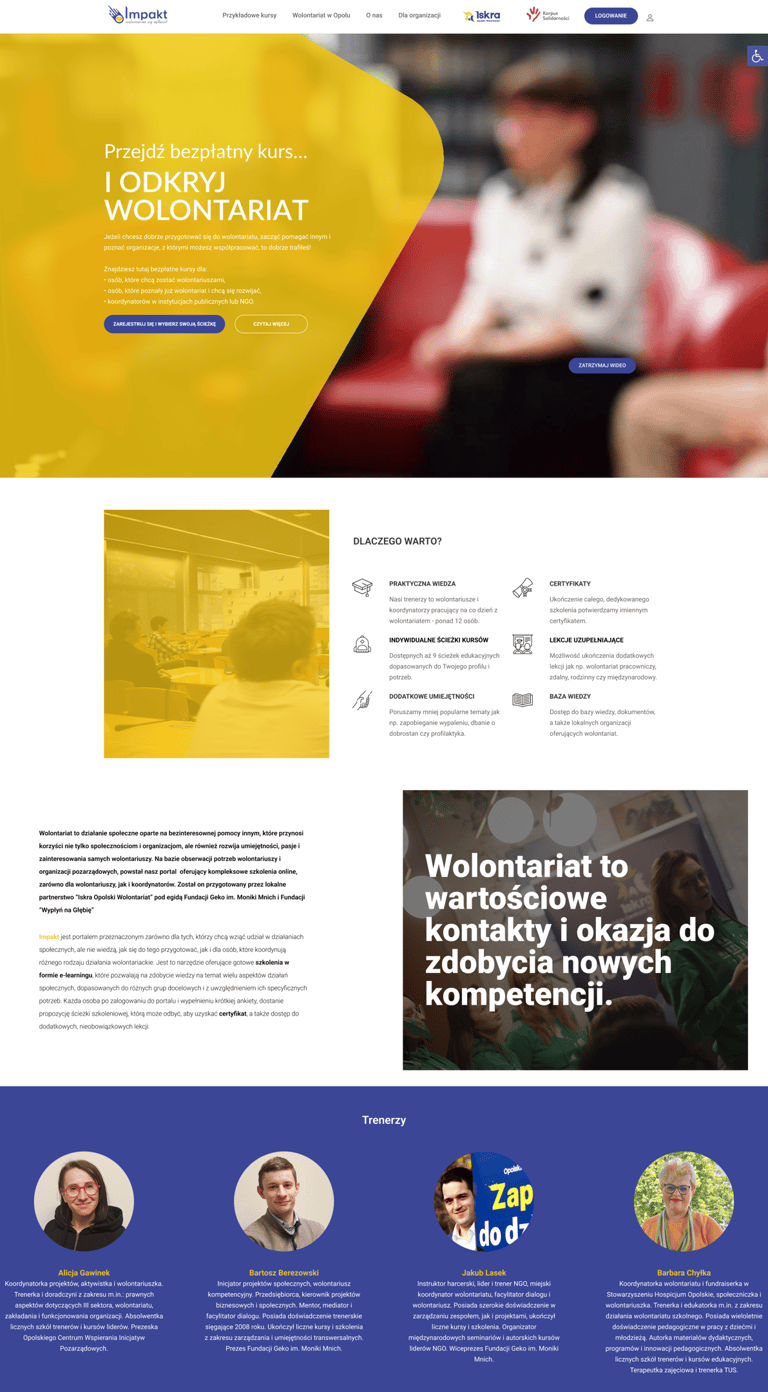

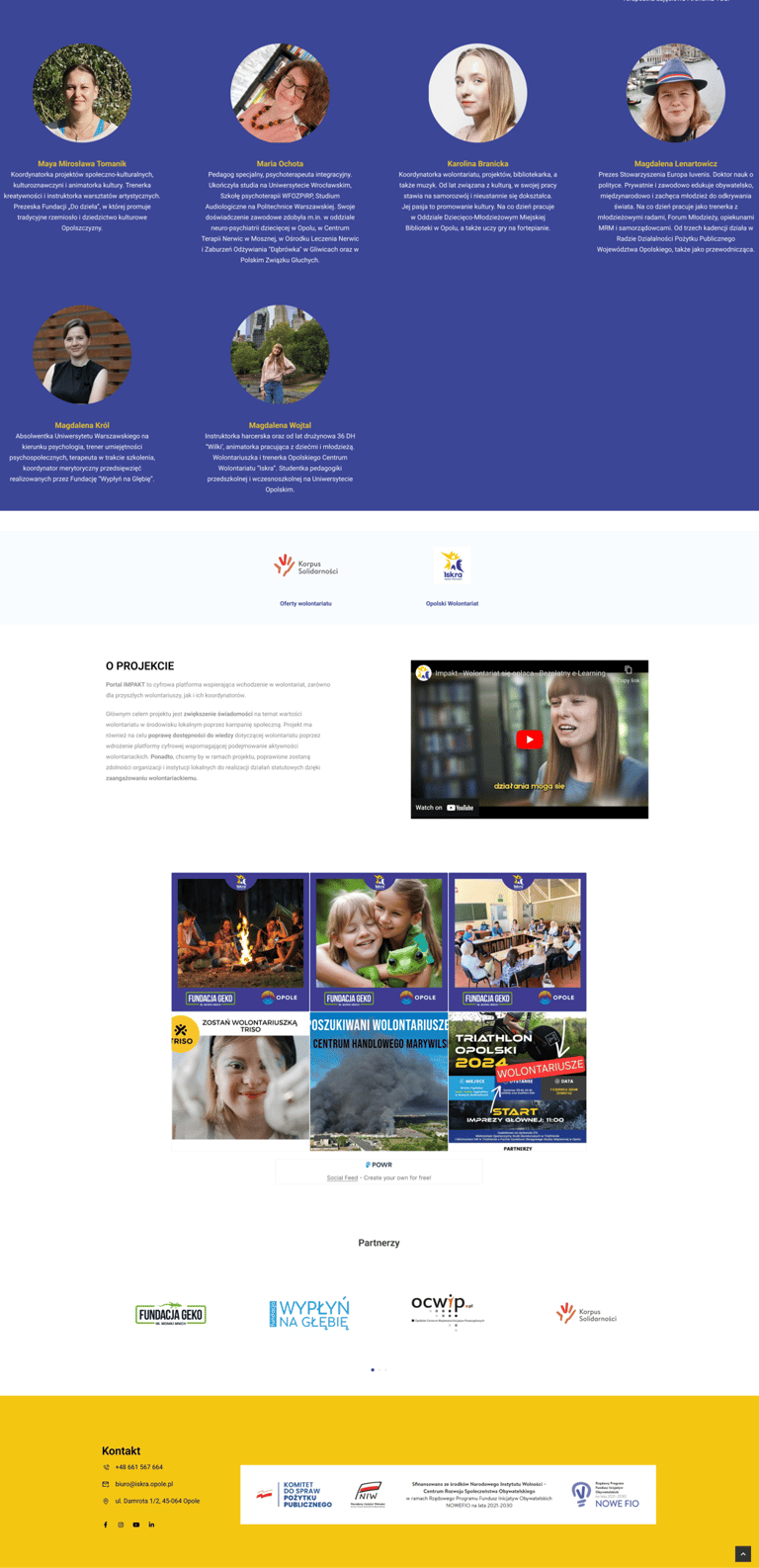

Final thoughts
01
Project outcomes
The user research I conducted taught me a lot about asking the right questions and organizing data, especially when several methods are being used. I'm glad we extended the research to a wider population as it gave us a more holistic view of the problem. It was a fantastic, heart-warming project that made me feel a sense of greater purpose. I also cherish the personal relationships I made along the way :)
02
The project has been backed by government program Citizen Initiatives Fund and the platform was launched in December 2022. Within 6 months over 400 people signed up in the learning platform and the project overall contributed to increased volunteer recruiting in 2023.

